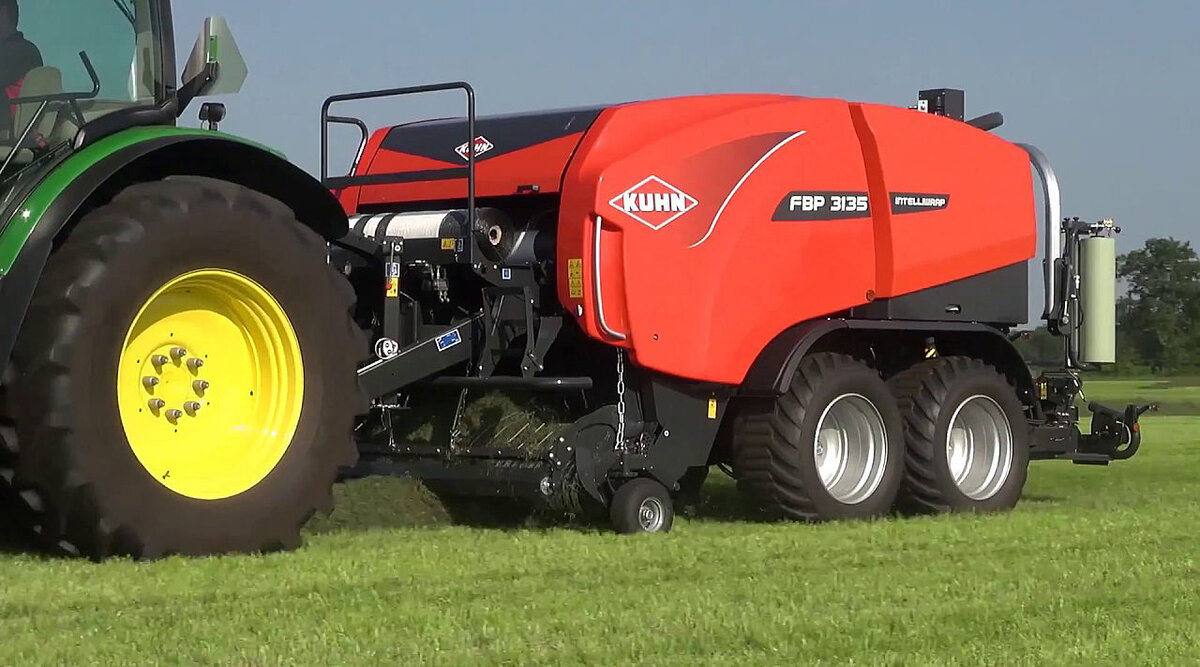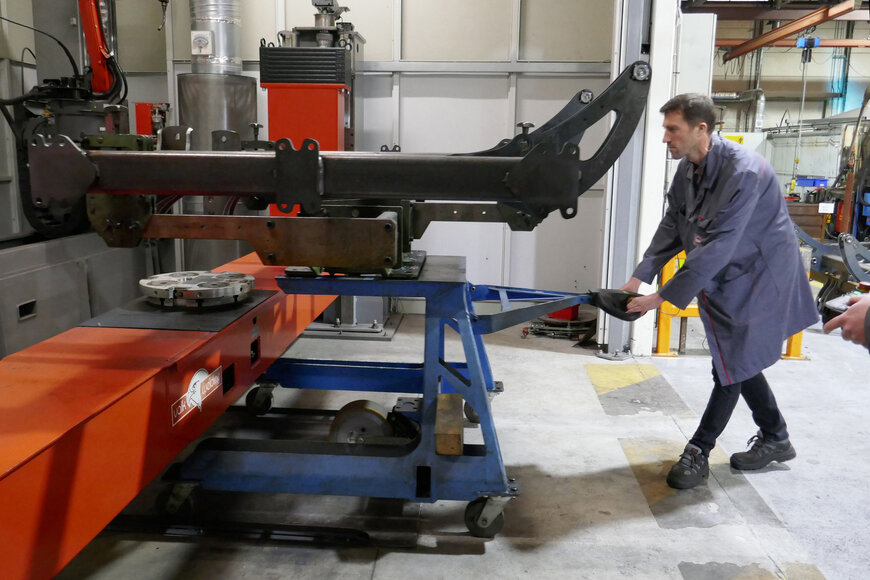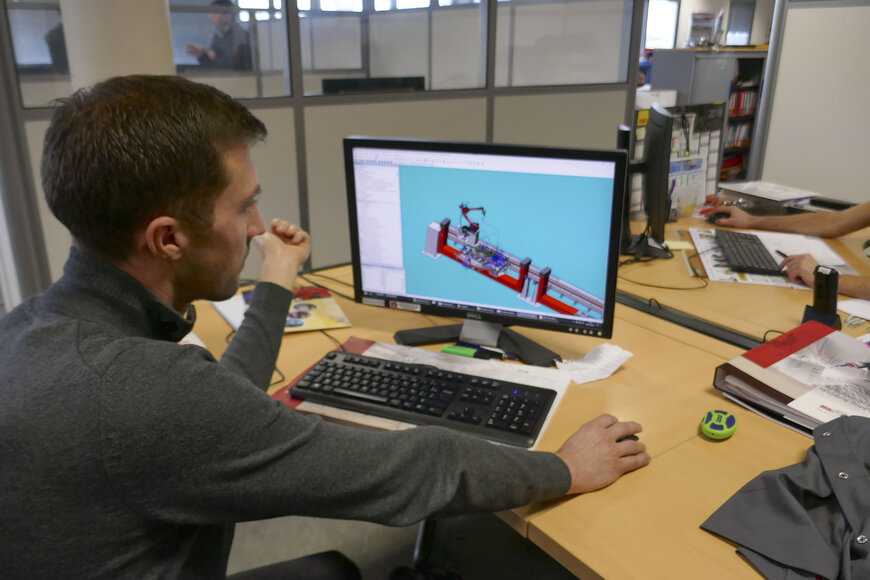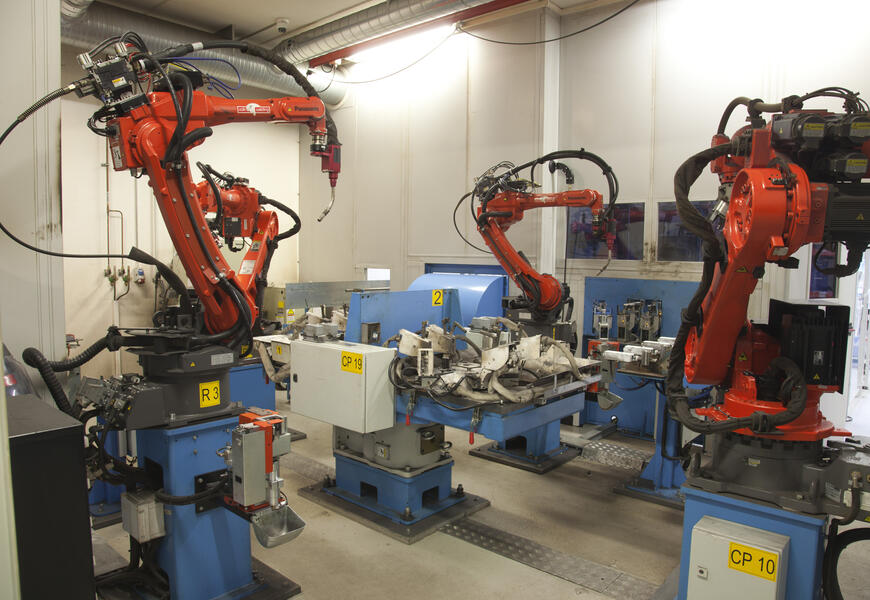Many years' experience with robotised welding
Each of the group branches is fully autonomous when choosing its production processes and strategies, geared to the various machines to be produced. Various robots are deployed at the Châteaubriant branchsuch as: ABB and IGM. Valk Welding has supplied the last robot systems. "Besides aiming for a long cycle time of the welding robots, the required manual finishing work also needs to be drastically reduced. Faced with such stringent demands, Valk Welding scored better than other robot integrators in the end," explains Michel Le Grumulec, who is responsible for industrialisation
3-d model exact match in reality
"Thanks to the DTPS off-line programming software, Valk Welding offers a refined and extremely accurate method of programming," explains Damien Collin, head of production automation for new products. "It's the specific options of the Valk Welding robots that save us so much time:
- When programming off-line, we can import the 3-D model as early as the design phase in order to assess the accessibility of each welded joint and to prepare the welding templates.
- "The 3-D cell programmed by Valk Welding in DTPS matches the cell on the work floor exactly. Each program written using DTPS is therefore almost immediately usable on the robot system. Of course we always need to make a few adjustments before activating the robot, but the torch positions are already set and the tolerances are within a millimetre. This is extremely important, as it's not the first off-line solution used by the company. This function saves us a great deal of time when programmers need to use the software," adds programmer Mickael Rouesne.






